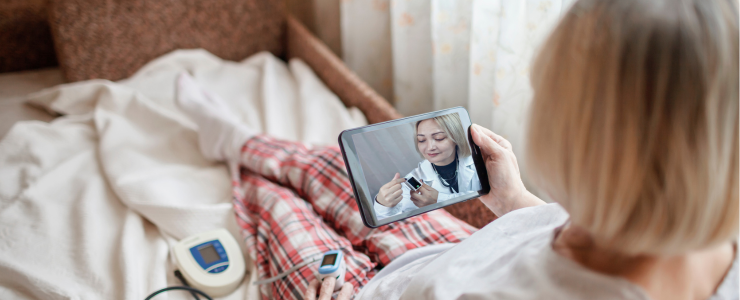Care Show Birmingham is the UK’s leading social and healthcare event. Each year, it provides an opportunity to discuss, and learn about, the latest thinking, innovations and solutions in care provision. Against a backdrop of the cost-of-living crisis, this year’s programme explored how to tackle some of the pressures the care sector faces. IoT connectivity has an important role to play in digital solutions for the healthcare sector, equipping care providers with patient information.
3 key trends at Care Show 2023
An ageing population makes social care needs even more acute as an estimated 2.2 million people need support with at least one everyday task and 22% of the older population living at home need help. I noted with interest three key trends at this year’s show. They were efficiency, in-home patient care and quality of life.
Efficiency
Technology plays a central role in enabling care providers to do more with what they have, and to digitise. Once information is digital, it can be analysed to determine all manner of insights, including return on investment.
Connected care, through technology, contributes to efficiency improvements. A prime example of this is the digitisation of paper records. Another, is process automation and patient monitoring. For example, it is time-consuming to dispense daily medication and doing so comes with the risk of errors. Instead, patients can receive pre-filled daily medication sachets, complete with barcodes that register each time a sachet is used.
In-home patient care
Technology also helps to keep patients at home for longer. People often prefer to receive care in the comfort of their own homes rather than in a care facility or hospital. It is often more economically viable to make this happen too. All of which contributes to a growing home healthcare market that is expected to rise to a staggering $797.8 billion globally by 2032.
Progress in product and service development and delivery helps deliver a patient-centric approach that minimises the need for hospital visits and admissions. It is an approach backed by the UK government, which announced over £3 million of technology investment to help improve patient independence and reduce avoidable hospital admissions.
Quality of life
A range of connected devices contribute to maximising patients’ quality of life. An example here is sensors that keep care providers informed so they don’t have to enter patient rooms unless needed. Motion detection sensors can indicate if a patient is sat up in bed, out of bed or moving about, which may indicate they need assistance. If signs suggest all is well with the patient, it is better for their sleep quality to leave them undisturbed.

How wireless connectivity supports the healthcare sector
Cellular IoT supports the healthcare sector by connecting products and solutions without the need to run wires, to retrofit facilities and provide services in the home.
This is because care providers cannot rely on patient-side infrastructure, such as Wi-Fi or fixed lines. There may be no broadband service at the property at all and, even if there is, it can be tricky to require patients to setup the service. Both patients and healthcare providers need plug and play to deploy connected health solutions. Cellular gives this control over implementations.
It also gives flexibility, with choice of connectivity according to type, network and tariff to suit the demands of the solution. The required network bandwidth will, for example, depend on the type of application and levels of data it needs to exchange.
Key considerations for IoT-connected healthcare solutions
Healthcare organisations and their solutions providers should consider the following factors carefully when planning their IoT-connected care solutions:
Security
Security is an absolute priority. All connected solutions need to be secured and patient data is among the most sensitive there is. Organisations need an IoT security framework, as a model to assess security against, as they adopt digitisation. The framework should cover technology capabilities, standards, and best practices to strengthen identity and authentication policies and defend, detect and react to cyber threats.
Uptime
Many connected care applications rely on real-time information. Remote patient monitoring, for example, which can track a range of conditions including chronic obstructive pulmonary disease, diabetes and sleep apnoea depend on care workers and clinicians collecting the data they need to make informed decisions. Data transfer must be reliable and alleviate the concern that solutions could go offline.
Managed service
Care providers are time-poor organisations and may have thousands of devices in operation. They need managed IoT connectivity that provides insights into deployed devices and the ability to effectively manage active connections.

This year’s Care Show highlighted the need for, and future of, efficient care operations, in-home patient care and improved quality of patient life. IoT connected solutions have the power to transform care provision, serving care receivers through digital solutions and monitoring patients’ conditions remotely through secure, reliable and always-on cellular connectivity. For more information on end-to-end digital health connectivity, explore solutions for SIM-based health and well-being applications or contact us on 0330 056 3300 or email hello@wirelesslogic.com


